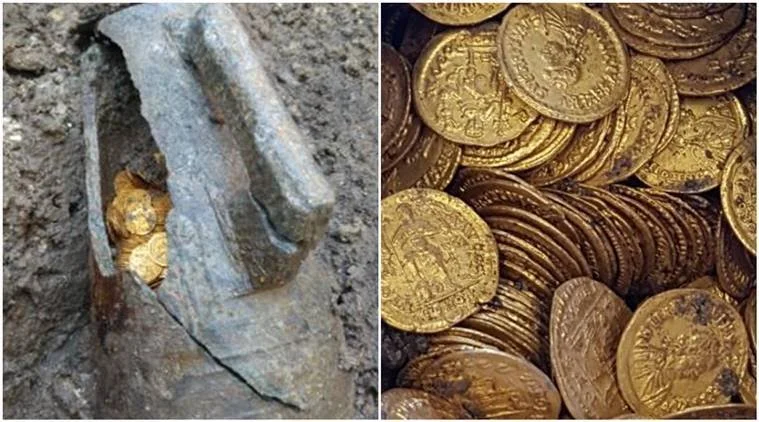In 2020 two teenagers volunteering at an archaeological dig in central Israel unearthed hundreds of 1,100-year-old gold coins, reports the Associated Press.

The 18-year-olds found the cache of 425 coins inside a clay vessel buried in the city of Yavne, according to Reuters. The currency appears to date to the ninth century, when the Abbasid Caliphate controlled much of the Near East and North Africa.
“This is one of the earliest known caches from this period (late [ninth] century A.D.) found in the country,” says Robert Kool, a coin expert with the Israel Antiquities Authority (IAA), in a statement. “The coins are made of pure 24-carat gold.”

As Laura Geggel writes for Live Science, the buried treasure weighs 845 grams (or 1.68 pounds). Based solely on the current price of gold per gram, the coins are worth around $52,600 today—but given their historical significance and numismatic merit, the trove’s actual value is likely significantly higher.
During the ninth century, the cache’s owner could have used it to buy a luxurious home in one of the well-to-do areas of the then-Egyptian capital, Fustat.
“The person who buried this treasure 1,100 years ago must have expected to retrieve it, and even secured the vessel with a nail so that it would not move,” say IAA archaeologists Liat Nadav-Ziv and Elie Haddad in the statement. “Finding gold coins, certainly in such a considerable quantity, is extremely rare. We almost never find them in archaeological excavations, given that gold has always been extremely valuable, melted down and reused from generation to generation.”

Per BBC News, the hoard consists of full gold dinars and 270 small gold cuttings, which were sliced off of the dinars to act as smaller denominations. One such fragment was cut from a gold solidus minted in Constantinople by ninth-century Byzantine emperor Theophilos. The first of its kind ever excavated in Israel, the coin offers a rare testament to economic ties between two empires that were often at odds.
“Whether it was through war or trade,” writes Marc Santora for the New York Times, “money kept flowing.”
Exactly who filled the clay jar with riches remains unknown. But Reuters notes that at the time of the cache’s burial, the area in which it was found housed an array of workshops.

“It was amazing,” says Oz Cohen, one of the volunteers who found the hoard, in a statement quoted by Reuters. “I dug in the ground and when I excavated the soil, saw what looked like very thin leaves. When I looked again I saw these were gold coins. It was really exciting to find such a special and ancient treasure.”
Kool tells the Times that the era of the Abbasid Caliphate, which ruled the region between 750 and 1258 A.D., is one of the “least understood in Israel.” Coins offer concrete evidence of the period, from the names of local leaders to mint locations and dates of production.
Speaking with the Associated Press, Kool adds, “Hopefully the study of the hoard will tell us more about a period of which we still know very little.”





